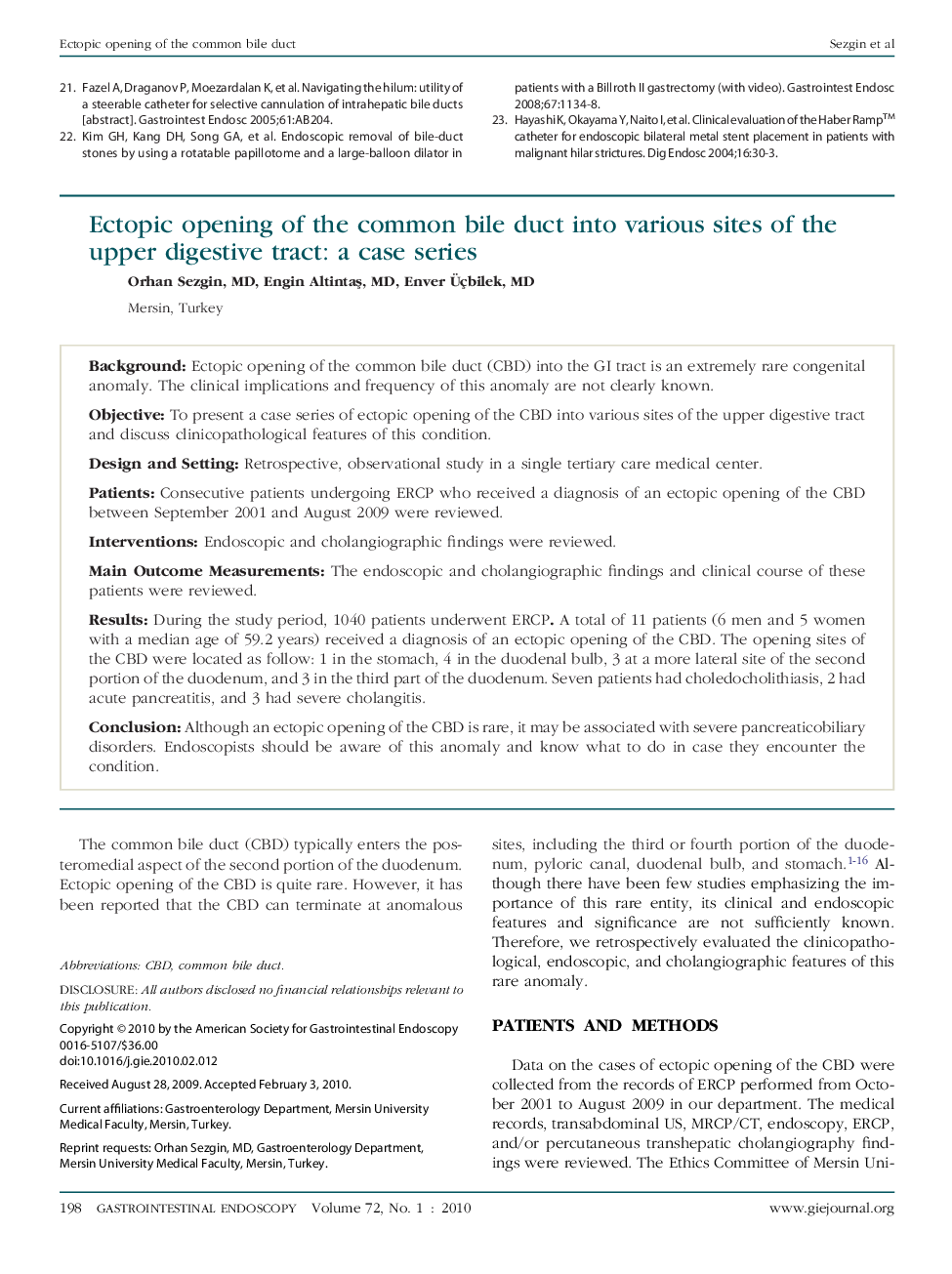| Article ID | Journal | Published Year | Pages | File Type |
|---|---|---|---|---|
| 3306975 | Gastrointestinal Endoscopy | 2010 | 6 Pages |
BackgroundEctopic opening of the common bile duct (CBD) into the GI tract is an extremely rare congenital anomaly. The clinical implications and frequency of this anomaly are not clearly known.ObjectiveTo present a case series of ectopic opening of the CBD into various sites of the upper digestive tract and discuss clinicopathological features of this condition.Design and SettingRetrospective, observational study in a single tertiary care medical center.PatientsConsecutive patients undergoing ERCP who received a diagnosis of an ectopic opening of the CBD between September 2001 and August 2009 were reviewed.InterventionsEndoscopic and cholangiographic findings were reviewed.Main Outcome MeasurementsThe endoscopic and cholangiographic findings and clinical course of these patients were reviewed.ResultsDuring the study period, 1040 patients underwent ERCP. A total of 11 patients (6 men and 5 women with a median age of 59.2 years) received a diagnosis of an ectopic opening of the CBD. The opening sites of the CBD were located as follow: 1 in the stomach, 4 in the duodenal bulb, 3 at a more lateral site of the second portion of the duodenum, and 3 in the third part of the duodenum. Seven patients had choledocholithiasis, 2 had acute pancreatitis, and 3 had severe cholangitis.ConclusionAlthough an ectopic opening of the CBD is rare, it may be associated with severe pancreaticobiliary disorders. Endoscopists should be aware of this anomaly and know what to do in case they encounter the condition.
